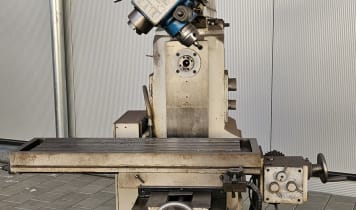Universal milling machines vary greatly in terms of size, producible tolerances, and processing options. The universal design does mean the ability to equip an extensive selection of tools, but a given product cannot always be produced on every milling table while maintaining consistent quality. When choosing a suitable machine, it is worth clarifying the following questions:
- What material will usually be processed?
- How often do series need to be produced?
- How large are the workpieces to be manufactured?
- What tolerance ranges need to be met?
The harder, heavier, larger and more precise a completed workpiece, the higher quality the universal milling machine design needs to be. For infrequent milling process on trial prototypes or fittings, simpler machines will be adequate. If serial quality individual pieces need to be created from solid steel that are highly resilient and precise, the quality of the mill needs to match.
Minimum requirements for producing serviceable products would be:
- Choose a machine made by a renowned manufacturer
- SK 30 or SK 40 tool holder
- Minimum spindle speed of 50 rpm in slow mode – this enable thread holes to be cut
- 3000 rpm for contours
- At least 250 x 700 mm² of clamping surface
These benchmark characteristics are certainly sufficient for producing satisfactory results from soft metals, such as aluminium, bronze or copper, but even steel can be processed to some extent.
Another aspect to consider prior to purchase is the milling accessories available (box cubes, machine vices, dividing apparatus, additional milling tools, etc.), as well as any peripheral devices on offer. Buyer beware: extra costs may be incurred (depending on requirements) that can exceed the cost of the machine itself.





















